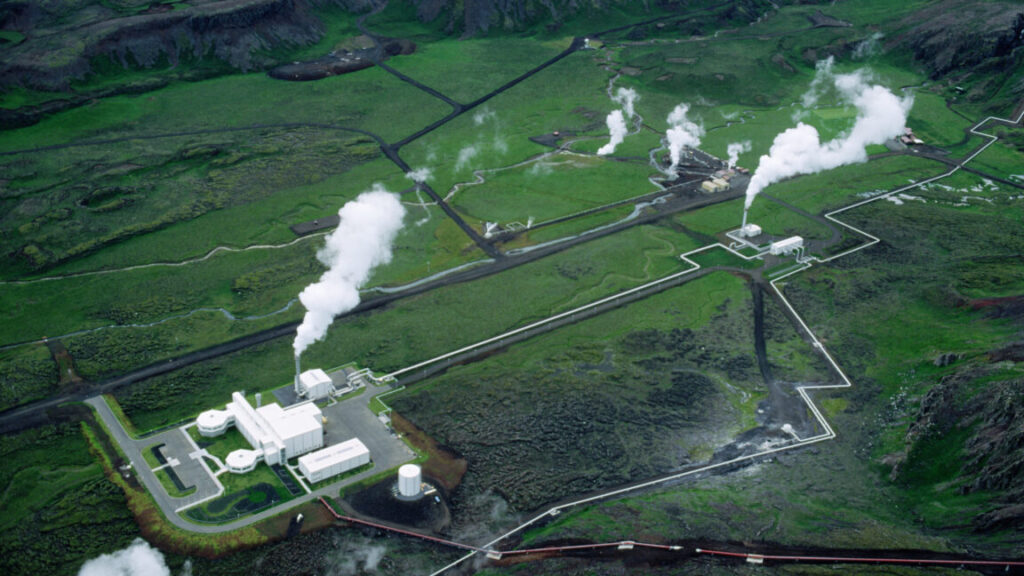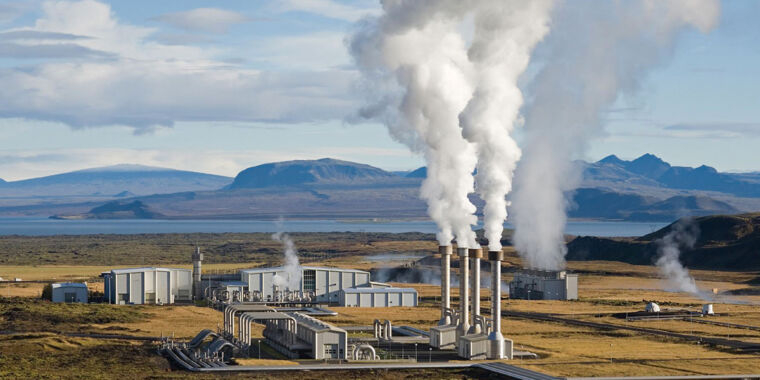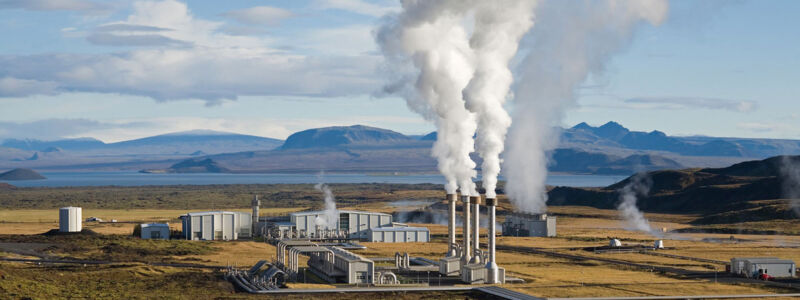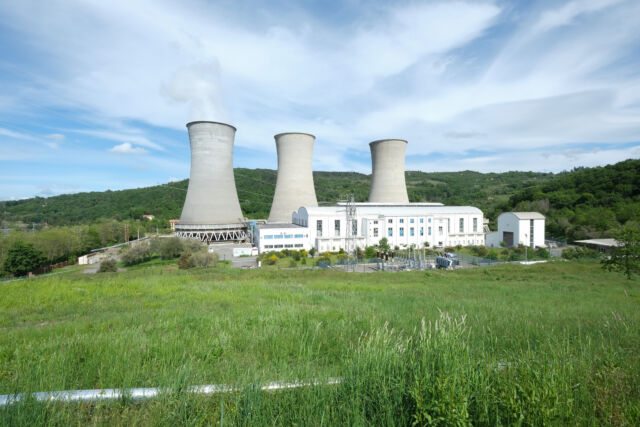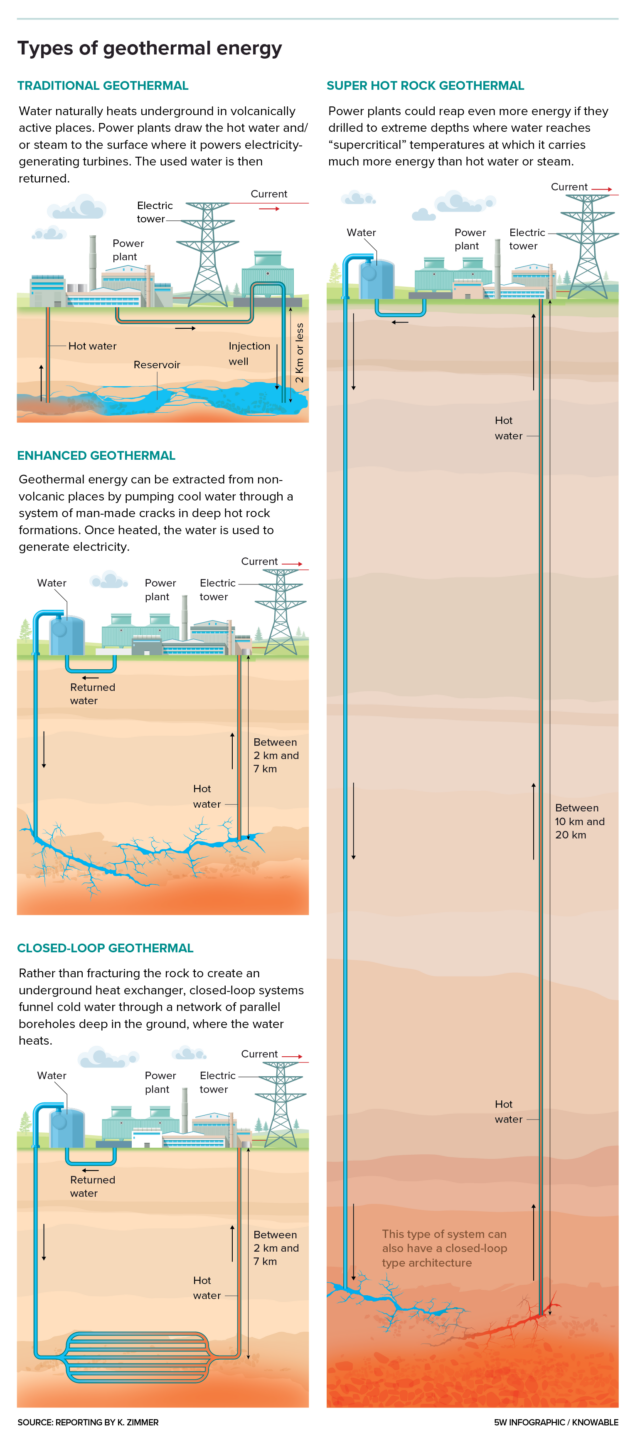A geothermal network in Colorado could help a rural town diversify its economy
Town pitches companies to take advantage of “reliable, cost-effective heating and cooling.”
This article originally appeared on Inside Climate News, a nonprofit, non-partisan news organization that covers climate, energy, and the environment. Sign up for their newsletter here.
Hayden, a small town in the mountains of northwest Colorado, is searching for ways to diversify its economy, much like other energy communities across the Mountain West.
For decades, a coal-fired power plant, now scheduled to shut down in the coming years, served as a reliable source of tax revenue, jobs, and electricity.
When town leaders in the community just west of Steamboat Springs decided to create a new business park, harnessing geothermal energy to heat and cool the buildings simply made sense.
The technology aligns with Colorado’s sustainability goals and provides access to grants and tax credits that make the project financially feasible for a town with around 2,000 residents, said Matthew Mendisco, town manager.
“We’re creating the infrastructure to attract employers, support local jobs, and give our community reliable, cost-effective heating and cooling for decades to come,” Mendisco said in a statement.
Bedrock Energy, a geothermal drilling startup company that employs advanced drilling techniques developed by the oil and gas industry, is currently drilling dozens of boreholes that will help heat and cool the town’s Northwest Colorado Business District.
The 1,000-feet-deep boreholes or wells will connect buildings in the industrial park to steady underground temperatures. Near the surface the Earth is approximately 51° F year round. As the drills go deeper, the temperature slowly increases to approximately 64° F near the bottom of the boreholes. Pipes looping down into each well will draw on this thermal energy for heating in the winter and cooling in the summer, significantly reducing energy needs.
Ground source heat pumps located in each building will provide additional heating or cooling depending on the time of year.
The project, one of the first in the region, drew the interest of some of the state’s top political leaders, who attended an open house hosted by town officials and company executives on Wednesday.
“Our energy future is happening right now—right here in Hayden,” US Senator John Hickenlooper (D-Colo.) said in a prepared statement prior to the event.
“Projects like this will drive rural economic growth while harnessing naturally occurring energy to provide reliable, cost-effective heating and cooling to local businesses,” said US Senator Michael Bennet (D-Colo.) in a written statement.
In an interview with Inside Climate News, Mendisco said that extreme weather snaps, which are not uncommon in a town over 6,000 feet above sea level, will not force companies to pay higher prices for fossil fuels to meet energy demands, like they do elsewhere in the country. He added that the system’s rates will be “fairly sustainable, and they will be as competitive as any of our other providers, natural gas, etcetera.”
The geothermal system under construction for Hayden’s business district will be owned by the town and will initially consist of separate systems for each building that will be connected into a larger network over time. Building out the network as the business park grows will help reduce initial capital costs.
Statewide interest
Hayden received two state grants totaling $300,000 to help design and build its geothermal system.
“It wasn’t completely clear to us how much interest was really going to be out there,” Will Toor, executive director of the Colorado Energy Office, said of a grant program the state launched in 2022.
In the past few years, the program has seen significant interest, with approximately 80 communities across the state exploring similar projects, said Bryce Carter, the geothermal program manager for the state’s Energy Office.
Two projects under development are by Xcel Energy, the largest electricity and gas provider in the state. A law passed in Colorado in 2023 required large gas utilities to develop at least one geothermal heating and cooling network in the state. The networks, which connect individual buildings and boreholes into a shared thermal loop, offer high efficiency and an economy of scale, but also have high upfront construction costs.
There are now 26 utility-led geothermal heating and cooling projects under development or completed nationwide, Jessica Silber-Byrne of the Building Decarbonization Coalition, a nonprofit based in Delaware, said.
Utility companies are widely seen as a natural developer of such projects as they can shoulder multi-million dollar expenses and recoup those costs in ratepayer fees over time. The first, and so far only, geothermal network completed by a gas utility was built by Eversource Energy in Framingham, Massachusetts, last year.
Grid stress concerns heat up geothermal opportunities
Twelve states have legislation supporting or requiring the development of thermal heating and cooling networks. Regulators are interested in the technology because its high efficiency can reduce demand on electricity grids.
Geothermal heating and cooling is roughly twice as efficient as air source heat pumps, a common electric heating and cooling alternative that relies on outdoor air. During periods of extreme heat or extreme cold, air source heat pumps have to work harder, requiring approximately four times more electricity than ground source heat pumps.
As more power-hungry data centers come online, the ability of geothermal heating and cooling to reduce the energy needs of other users of the grid, particularly at periods of peak demand, could become increasingly important, geothermal proponents say.
“The most urgent conversation about energy right now is the stress on the grid,” Joselyn Lai, Bedrock Energy’s CEO, said. “Geothermal’s role in the energy ecosystem will actually increase because of the concerns about meeting load growth.”
The geothermal system will be one of the larger drilling projects to date for Bedrock, a company founded in Austin, Texas, in 2022. Bedrock, which is working on another similarly sized project in Crested Butte, Colorado, seeks to reduce the cost of relatively shallow-depth geothermal drilling through the use of robotics and data analytics that rely on artificial intelligence.
By using a single, continuous steel pipe for drilling, rather than dozens of shorter pipe segments that need to be attached as they go, Bedrock can drill faster and transmit data more easily from sensors near the drill head to the surface.
In addition to shallow, low-temperature geothermal heating and cooling networks, deep, hot-rock geothermal systems that generate steam for electricity production are also seeing increased interest. New, enhanced geothermal systems that draw on hydraulic fracturing techniques developed by the oil and gas industry and other advanced drilling methods are quickly expanding geothermal energy’s potential.
“We’re also very bullish on geothermal electricity,” said Toor, of the Colorado Energy Office, adding that the state has a goal of reducing carbon emissions from the electricity sector by 80 percent by 2030. He said geothermal power that produces clean, round-the-clock electricity will likely play a key role in meeting that target.
The University of Colorado, Boulder, is currently considering the use of geothermal energy for heating, cooling, and electricity production and has received grants for initial feasibility studies through the state’s energy office.
For town officials in Hayden, the technology’s appeal is simple.
“Geothermal works at night, it works in the day, it works whenever you want it to work,” Mendisco said. “It doesn’t matter if there’s a giant snowstorm [or] a giant rainstorm. Five hundred feet to 1,000 feet below the surface, the Earth doesn’t care. It just generates heat.”
A geothermal network in Colorado could help a rural town diversify its economy Read More »
